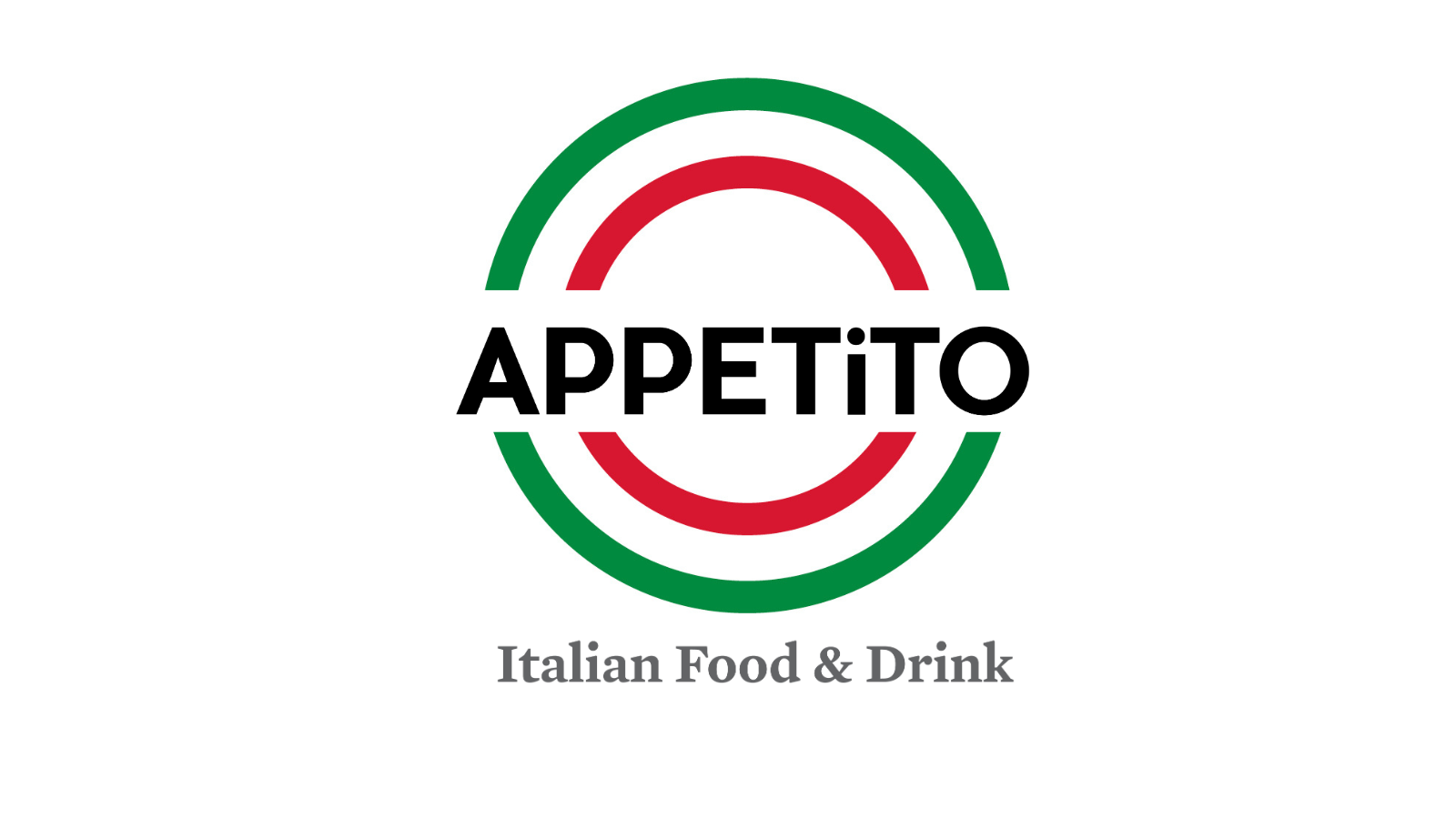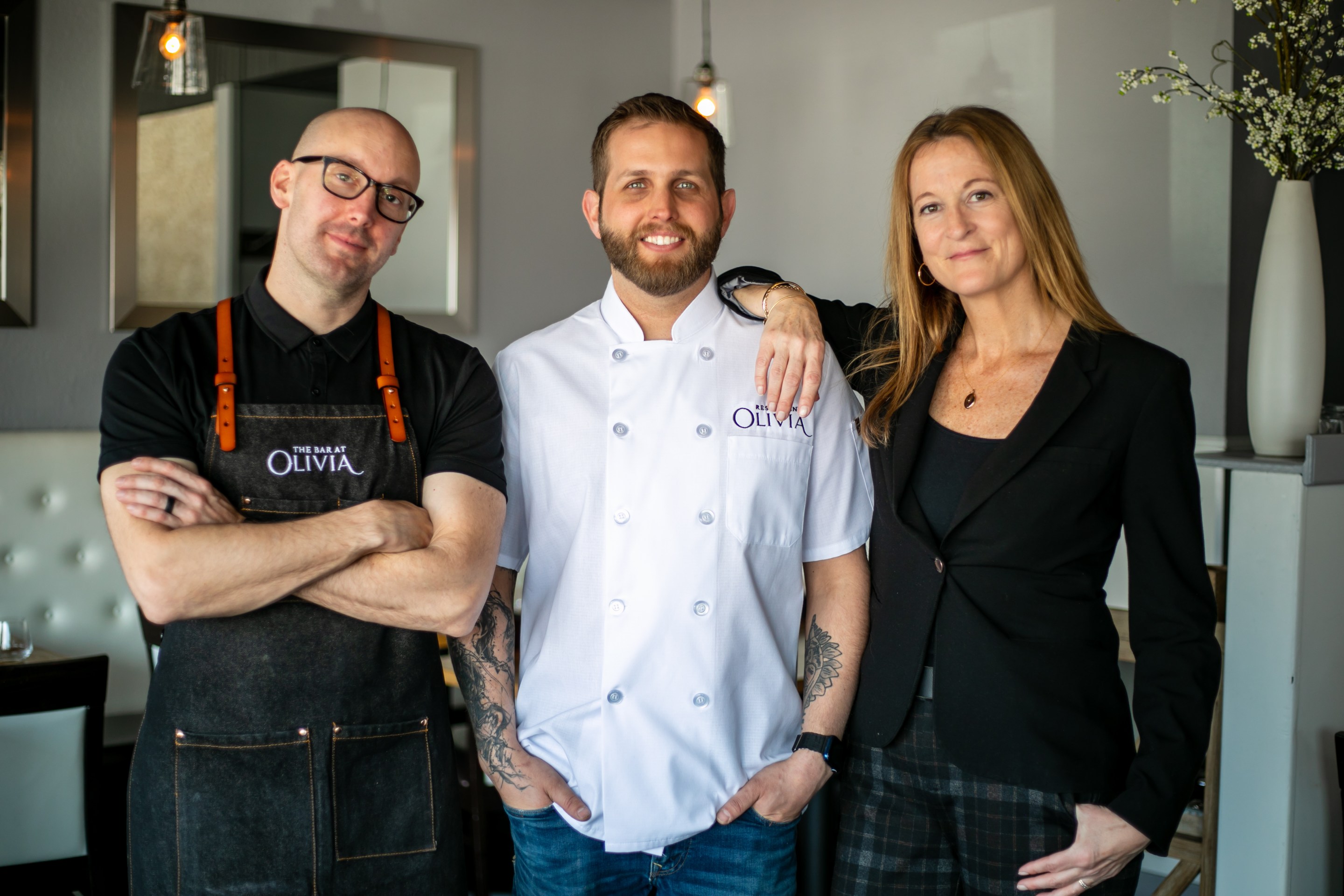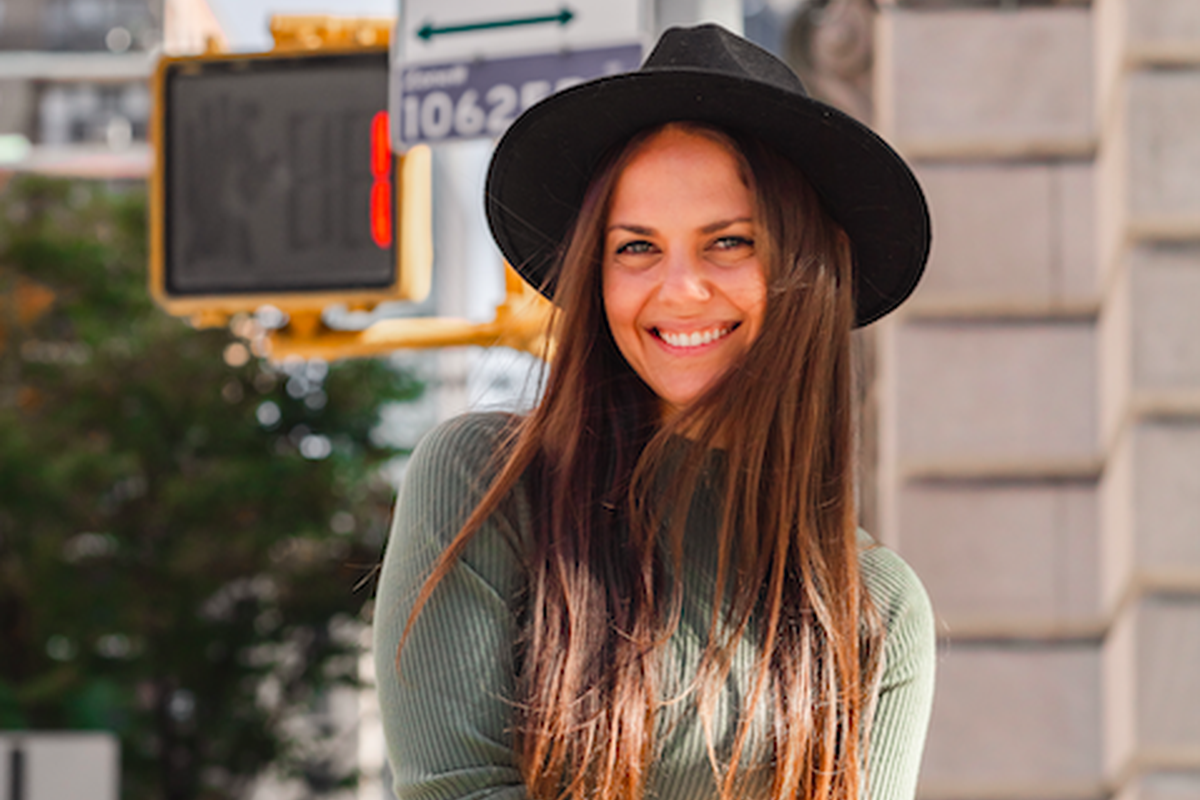It’s a summer Sunday morning in Brooklyn, and the bakery and café Ciao, Gloria is buzzing with couples, young families, and friends enjoying brunch inside the light-filled dining room and outside on the patio. Renato Poliafito’s flagship, open since 2019, features a crowd-pleasing menu of Italian-leaning baked goods, savory dishes, sandwiches, and more. The entryway even features a small alimentari, with olive oil, dried pasta, Sicilian oregano, and many copies of his first “solo album,” or cookbook, Dolci! American Baking With an Italian Accent (Knopf).
Poliafito co-authored four books with Matt Lewis while a partner at Baked in Red Hook, Brooklyn, but for Dolci!, as with Ciao, Gloria, he set out on his own (though he collaborated with the writer Casey Elsass on the book). The results speak for themselves. Dolci! is a tour de force, with recipes and techniques that bridge Old Country sensibilities with New World ideas.
There are recipes for cakes and cookies, gelato and pies, as well as focaccia, frittata, and biscotti. Traditionalists can learn how to make tricolore bomboloni, while more adventurous cooks can flip to fun recipes like tiramisu-inspired “Italian Krispie Treats.”
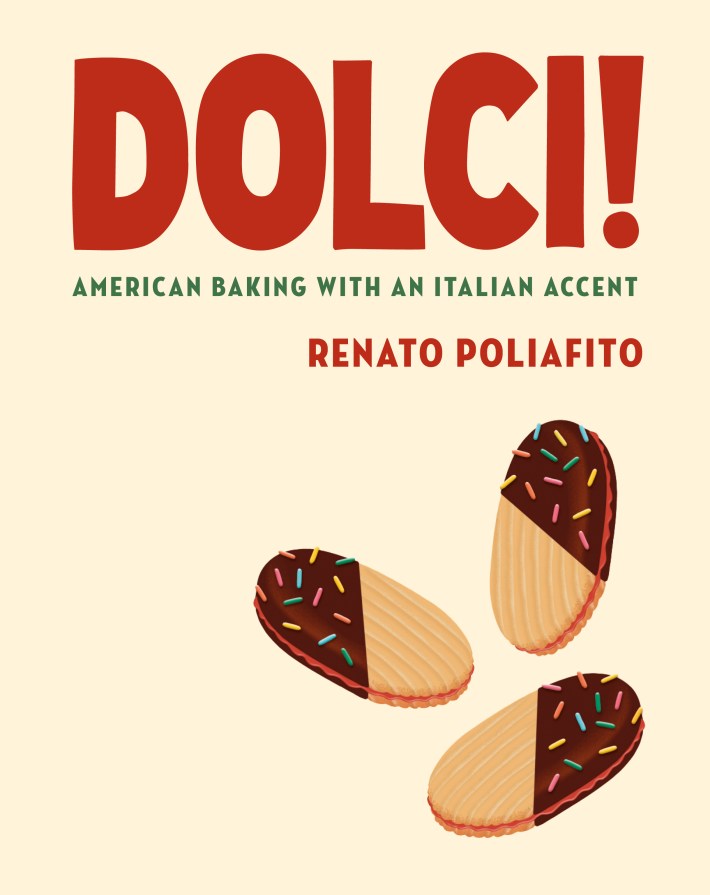
The book even features an eye-catching cover with three chocolate-dipped, sprinkle-covered butter cookies. The illustration led to a discussion of whether or not Italian cookies are too dry, among other topics including Poliafito’s background as a first-generation Italian-American, his forthcoming pasta restaurant—Pasta Night—across the street from Ciao, Gloria, and more in this (edited, condensed) interview.
Let's start by talking about Dolci! and trying to find this space between Italian desserts and Italian American desserts, and more straight-up American desserts, as you write about in the book.
The approach for a cookbook or any book is that it could be your last book, so you want to put everything into it. That was my approach. I was like, I want this to be comprehensive, yet approachable, yet really be reflective of who I am as a person, because I think that's the most honest, most truthful way to approach anything.
How did you start?
Usually with cookbooks, I sit down and I'll do the table of contents and anything that interests me, and then I try to categorize everything and see where things can fit, things I've been curious about. It just becomes this, like a brainstorm, in a way that happens to be a table of contents. Then I'll try to break everything down. And, you know, in that, in that list of different recipes, there are things that I know are personal, and I already know the story behind it, or I know the historical context, or, you know how I want to approach it, how I want to explain it, so I see where they need to go, and maps itself out, in a way, but that's how I've worked on the Baked books as well with Matt, and how I approached this one. It was like, kind of like the same idea, but I knew that instead of two voices, it was just going to be my voice, and I wanted it to be very honest and personal.
There's a lot of ground to cover when you're talking about Italian, and Italian-American desserts—
Exactly, and like, what to include and what not to include, and what to change and what not to change. It was a slightly gargantuan task. Sometimes you don't know what you're getting yourself into, but in the end, it all works out— it's a nice mix and it is approachable.
You have a whole “Cookies and Bars” section in Dolci! What is your take on the Italian cookie? I grew up in a community with a lot of Italian Americans and cookies were a fixture of gatherings, but for some people who aren’t familiar with them, I often hear complaints about how dry and crumbly the cookies are.
There are some cookies that are incredibly dry. I feel that it has to be something nostalgic, you know, because if you're going to eat a dry cookie or an Italian cookie, and it's on the drier side, and we're usually now used to very moist, chewy, kind of pull-apart cookies as Americans, that dry cookie needs to live somewhere in your memory for you to really, really appreciate it. You know, I tried to bridge that gap in the book. Like, here's a moist, chewy cookie that has hazelnuts and Nutella in it, so it's got this Italian vibe going. But then I also have these butter cookies that made the cover as an illustration. And I have to be honest, a lot of those Italian bakeries, those cookies are shipped in. They're God knows how old, you know, there's nothing really fresh about them. Ingredients-wise, I don't know if it's actual butter or if it's margarine. If the chocolate's actual chocolate, if the raspberry is actual raspberry. There are multiple levels there, you know. And depending on the quality of the shop, it could be good, it could be terrible, you know, but they're always there. That's the thing. They're like, evergreen. I made a butter cookie recipe in the book that's delicious. And if you make them fresh, and you dip them in actual chocolate, and you're using actual raspberry preserves, and good quality butter, you're gonna have an amazing cookie. And you could eat like a dozen at a time. So I think that's the real, true difference.
Another thing I wanted to ask you about is the inclusion of fruit, which as you note is an important part of Italian sweets and pastry.
I've mentioned it a few times: when exploring this book, I found that Italians definitely lean heavily on, like, a dozen ingredients for pastry. It's fine. They're repurposed in a multitude of ways. But it's ricotta, it's pistachio, it's almond, it's orange, it's lemon — that's basically it, and chocolate, obviously. So it was a challenge to make it interesting and just be like, have a diverse amount of recipes in there. But as far as citrus goes, Italy is so verdant, you know? And it's got a farm, and it's got produce, and it has this lovely abundance of things. And, you know, citrus just makes sense. It's everywhere. It's in the sweet and the savory. I mean, it's just a natural evolution of how they make food with what's there, what's local, what's growing outside. It just makes sense that it just ends up in the desserts, and that most of the desserts, most of the food, focuses on what is in the region, what is hyper local, and it's just stayed that way for so long.
That's what makes it so appealing, right?
Yeah, and it's delicious. It's so rustic and homey. And a lot of the desserts are meant to be made at home. You know, you'll have your fancy Italian pastries and stuff like sfogliatelle, which are super common. But, you know, if you've ever made sfogliatella, it is a process. You don't usually make that at home, but you can buy it at the pasticceria. Or other things like Delizia al Limone or other things that are slightly more complicated. But then you have things like the Cassata cake that is all over southern Italy, very typical of Sicily, obviously, that people make at home and would buy at the pastry shop as well.
What goes through your mind when you’re working on a book like this and you go to an Italian restaurant and all they have for dessert is tiramisu?
I mean, I like their dedication, knowing that it is in an Italian restaurant, it's the go-to dessert and they probably had other desserts on there at some point, but they're like, what's the point if it's always tiramisu? I mean, if it's done well and it's delicious, then great. You know, that's your signature dessert. It's a good one. So stick to it. I'm actually opening up a restaurant across the street from Caio, and it's going to be a pasta place, like a fine-casual pasta place. And, you know, I'm working on the dessert menu, and I want it to lean Italian. I want spoon desserts, like tiramisu, budinos, panna cottas, and stuff like that, which I can't do [at Ciao, Gloria] because we don't have a refrigerated display. I'm excited about that, but I definitely want to hit that tiramisu out of the park.
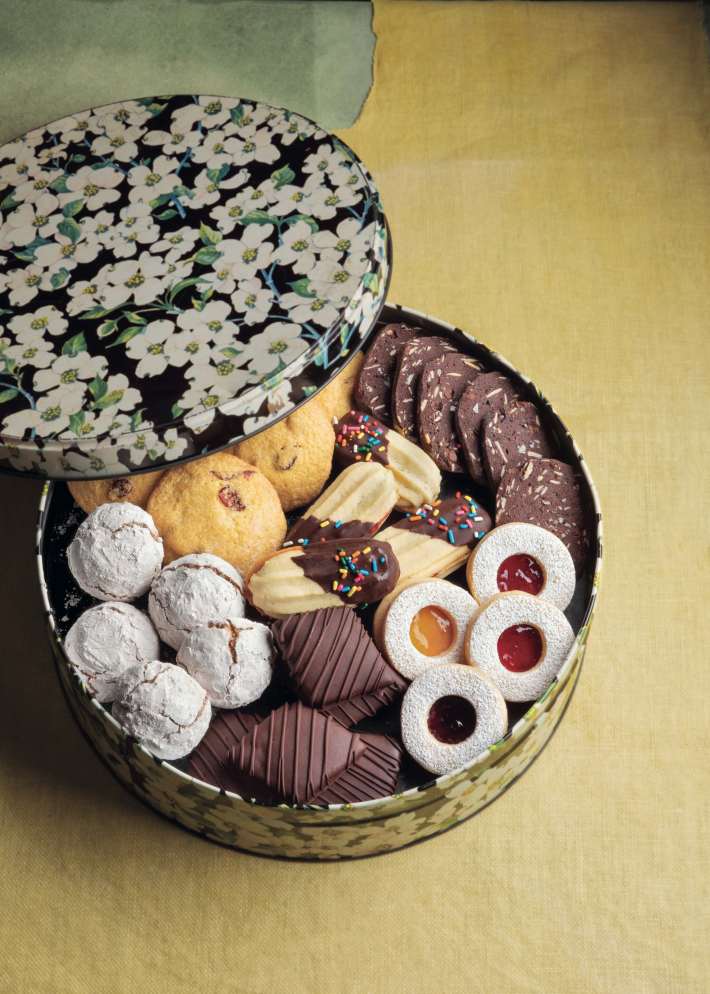
Italians have affogato and sometimes pair amaro with desserts. What do you think about the Italian tendency to use coffee and other beverages as part of dessert?
I love that. I love pairing. I think that's great. And Italians aren't like, necessarily heavy drinkers. They'll drink after a meal, they'll drink during a meal, they'll drink before the meal. But it's always food-focused. It's not like: I'm going to go out and pound a few drinks. I love incorporating them into the desserts. I think it's a very Italian thing to add some kind of boozy element to the dessert, think like the rum baba, or, tiramisu. I started playing around with amaros and bitters and things like that, and trying to incorporate those into the desserts as well. I love that interplay between, you know, here's a finishing drink that may be syrupy sweet or really herbaceous and bitter, but it's coupled with something sweet. It's coupled with something as simple as a cantucci or a little cookie that you can dip. It's a nice culture. I'm not a big drinker, so I'd rather have alcohol that way. To me, it makes more sense than to go out be like, I'm gonna have like, six drinks, right after the other. It doesn't, it doesn't compute.
You mentioned your new pasta place, and I noticed that there are also great savory recipes in the book, too. I was wondering about the process of wanting to include those, and did they always fit into your mind that they should be in Dolci!
I wanted to at least dedicate a chapter to savory, or include savory, in that it was something we did at Baked and in the books where we would have, like, some savory items kind of thrown in, because they were baked goods, you know. So it was always like bread related or, you know, something you would put in the oven. But here I wanted to dedicate a chapter, because when I think of Italian pastry, and I think of Italian dessert and that culture, it's intertwined with street food. It's intertwined with some savory baked goods. Because when you go into a bar, you know, it's all there. You can have a crostata and a cappuccino or you could have an arancini and a Coca Cola. The people who are baking are just as versed in savory. So they know how to make arancini, they know how to make supplì, they know how to make focaccia. It just all works together as one universal thing. It's not as separate as it is here, you know? I also have a penchant for savory food. I love savory food. It rivals dessert. I've been making desserts and pastries for 20 years, so I wanted to explore. That's why I'm so excited about the pasta place [too].
In your introduction to Dolci!, you talk about being the American-born son of Italian parents who emigrated to America, and you touch on themes that will be familiar to many Italian-Americans. From a dessert perspective, how did that affect who you're writing for? Did you think about that?
I mean, yes, I did. I did kind of have an idea. I wanted it to be broad. I just didn't want to, like, focus on Italian Americans, you know, because even though I'm Italian American, I kind of see myself a little outside of that because I'm the son of immigrants. I'm not like a second or third or fourth generation. It's like my parents are from Sicily. So growing up was a little different than Italian Americans who, you know, were familiar with Italian culture, or their great grandparents spoke Italian, but they didn't speak Italian. I was entrenched in it. I mention in the book: my dad was like, in our home, we’re in Italy; outside of the home, you're in America. And so I wanted my audience to be more broad. I wanted people in Italy to be able to read the book. I wanted people who are like me and have immigrant parents to be able to enjoy the book. But I also wanted Italian Americans to be able to pick up the book and find things that are familiar, find things that are nostalgic to them. I really tried to be open—to people who are just like Italophiles, who may not be Italian at all, but they love gelato and almond torts and things like that.
One of the things I love about Dolci! is that to make desserts and sweets, you really need to follow the recipes, and you have so many here. Baking calls for precision, right?
I mean, baking is a science. I talk about having a scale, and all the recipes are in grams with cups afterwards. As you know, it's usually reversed [in American cookbooks]. I'm trying to get people to bake the proper way and measure everything out with weights, use a scale, read through the recipe. It's just simple things that you can do to become a better baker. I think if people approach it that way, without being frantic or nervous, they will be able to make every recipe in the book, because nothing is too complicated. It might be multi-step or whatever, but if you read through it, and you make things in the order and approach each step as it is in the book, there's no reason you can't bake.
I can’t end without mentioning Italian sandwiches, which seem to be getting more popular by the day.
Yes, and we have Italian sandwiches here [at Ciao, Gloria], and they're wildly popular. You know, our biggest, most popular sandwich is something I call the Italo Disco Club. It's a focaccia sandwich— a turkey club, basically, that's been Italian-ified. It's got crispy prosciutto, bomba Calabrese (spicy spread), avocado, provolone, smoked turkey, and then greens. It's pressed on really good focaccia that we make in house. It's the thing we sell the most of every day, you know? And then we have a mortazza sandwich. We sometimes do piadinas. I'm very much into that Italian sandwich trend.
Well, hopefully we’ve got an idea for your next book now!
Right. Who knows?


